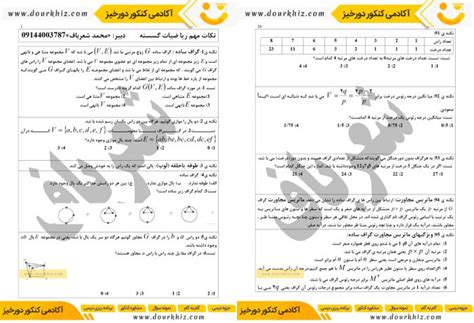What’s the most time-efficient workout split for men aiming for peak strength & mass?

The Quest for Efficiency and Gains
For men dedicated to building peak strength and significant muscle mass, the gym is a second home. However, in our increasingly busy lives, finding the most time-efficient way to achieve these ambitious goals is paramount. Spending endless hours in the gym isn’t always feasible or even necessary. The secret often lies not just in how hard you train, but how smartly you structure your workouts.
The right workout split can make all the difference, allowing for sufficient frequency, intensity, and recovery without consuming your entire week. But what exactly is the ‘best’ split when time is a precious commodity?

Understanding Popular Workout Splits
Before we crown a winner, let’s briefly define what a workout split is and consider the most common approaches. A workout split divides your body into different muscle groups or movement patterns, assigning them to specific training days. This allows for focused effort and adequate recovery for each part of the body.
- Full Body Split: Training all major muscle groups in each session, typically 2-3 times per week.
- Upper/Lower Split: Dividing workouts into upper body days and lower body days, usually 4 times per week.
- Push/Pull/Legs (PPL): Grouping exercises by movement pattern – push (chest, shoulders, triceps), pull (back, biceps), and legs (quads, hamstrings, glutes, calves). This can be run 3 or 6 times per week.
Contenders for Peak Strength & Mass
The Full Body Split: High Frequency, Potentially Longer Sessions
A full body split, performed 3 times a week, offers excellent frequency for muscle protein synthesis and strength adaptation. Each muscle group is hit three times a week, which is fantastic for growth. However, to achieve “peak strength & mass,” these sessions can become quite long if adequate volume is included for every muscle group. While efficient in terms of gym days, the time spent per session might be extensive, making it less “time-efficient” for some individuals if they prefer shorter, more frequent sessions.
The Upper/Lower Split: The Goldilocks Zone?
Often hailed as the optimal balance for intermediate to advanced lifters, the Upper/Lower split typically involves 4 training days per week (e.g., Upper, Lower, Rest, Upper, Lower, Rest, Rest). This structure allows for training each muscle group twice a week, which is widely considered ideal for both strength and hypertrophy. Sessions are generally manageable in length (60-90 minutes), focusing on fewer muscle groups per session but with sufficient volume and intensity.

Push/Pull/Legs (PPL): Effective, But How Efficient?
A PPL split can be highly effective. If run 3 times a week (e.g., Push, Pull, Legs, Rest, Push, Pull, Legs), each muscle group is only trained once a week, which might not be enough frequency for “peak” gains, especially for natural lifters. To get the ideal 2x/week frequency, you’d run it 6 times a week (PPL, PPL), which, while effective, isn’t particularly “time-efficient” in terms of gym days.
The Verdict: Why Upper/Lower Often Reigns Supreme
For men aiming for peak strength and mass while prioritizing time-efficiency, the Upper/Lower split (4 days/week) is often the superior choice. Here’s why:
- Optimal Frequency: Each major muscle group is trained twice a week, striking a perfect balance between stimulating growth and allowing for recovery.
- Manageable Session Length: By dividing the body, each workout can be focused and completed within a reasonable timeframe (60-90 minutes), preventing excessive fatigue and maintaining intensity.
- Enhanced Recovery: Compared to a full body split, individual muscle groups get more targeted rest between sessions, aiding recovery and reducing the risk of overtraining.
- Versatility: It allows for significant volume per muscle group across the week, vital for hypertrophy, while also providing ample opportunity for heavy compound lifts crucial for strength.
A typical structure might look like this:
- Monday: Upper Body (Chest, Back, Shoulders, Biceps, Triceps)
- Tuesday: Lower Body (Quads, Hamstrings, Glutes, Calves, Abs)
- Wednesday: Rest/Active Recovery
- Thursday: Upper Body (Different exercises or rep ranges than Monday)
- Friday: Lower Body (Different exercises or rep ranges than Tuesday)
- Saturday/Sunday: Rest/Active Recovery

Maximizing Your Time-Efficient Split for Peak Results
Simply following an Upper/Lower split isn’t enough; you need to optimize your approach:
Focus on Compound Movements
Prioritize exercises that work multiple muscle groups simultaneously, like squats, deadlifts, bench presses, overhead presses, and rows. These are the biggest movers for strength and mass and offer the most bang for your buck time-wise.
Prioritize Progressive Overload
To continuously build strength and mass, you must consistently challenge your muscles. This means gradually increasing the weight, reps, sets, or decreasing rest times over time. Track your progress diligently.
Don’t Neglect Nutrition & Recovery
Even the best workout split will falter without proper fuel and rest. Ensure you’re eating enough protein, carbohydrates, and healthy fats, and getting 7-9 hours of quality sleep each night. Recovery is where growth happens.
Consistency is King
No split works if you don’t stick to it. Consistency in training, nutrition, and recovery is the single most important factor for achieving peak strength and mass.

Final Thoughts
While individual preferences and responses vary, the Upper/Lower split, executed 4 days a week, stands out as the most time-efficient workout split for men aiming for peak strength and mass. It offers an optimal balance of training frequency, volume, and recovery, allowing for significant gains without demanding an unreasonable amount of gym time. Implement this split with intelligent exercise selection, progressive overload, and unwavering consistency, and watch your strength and physique transform.









